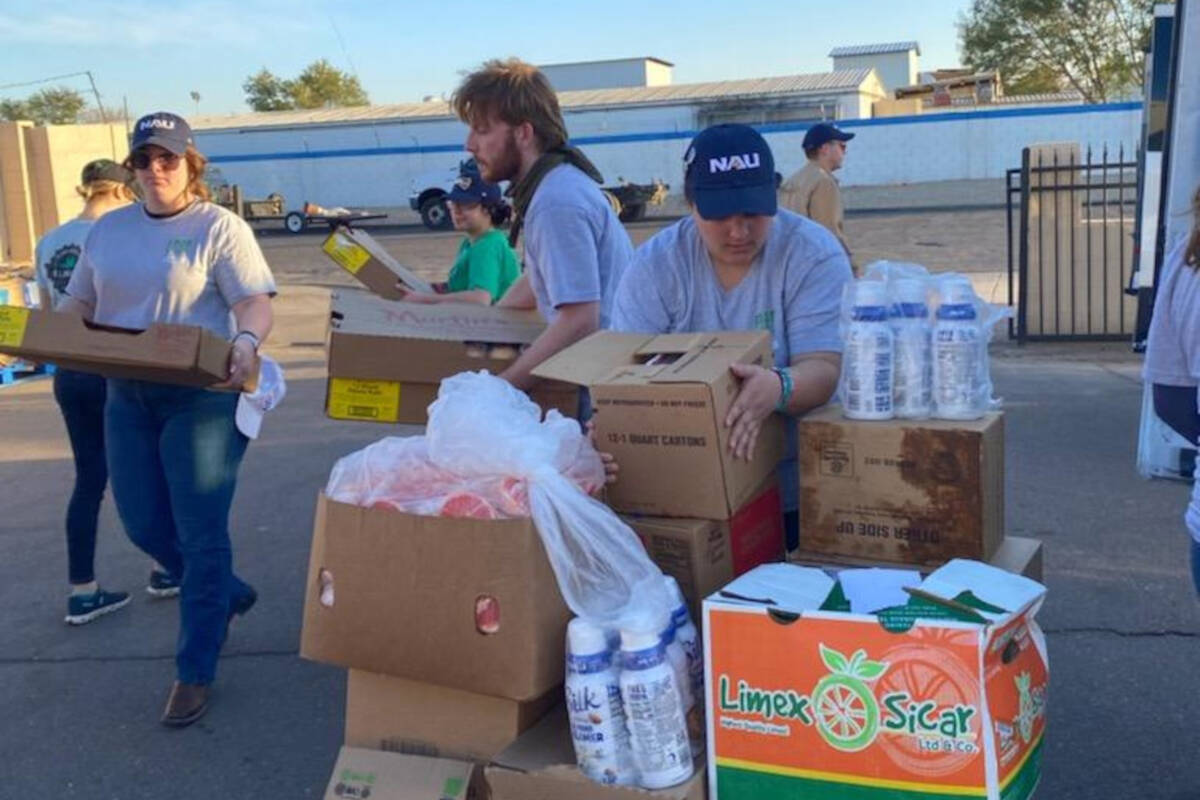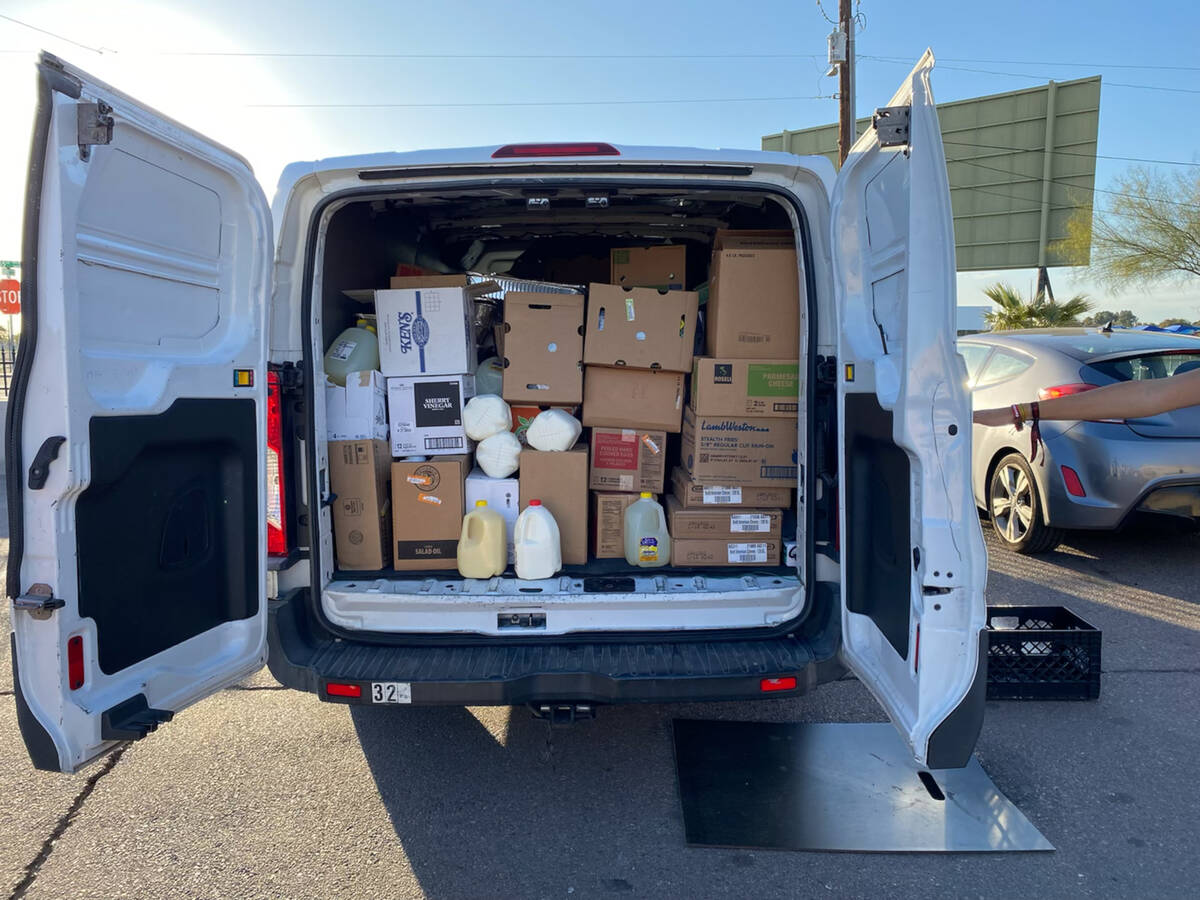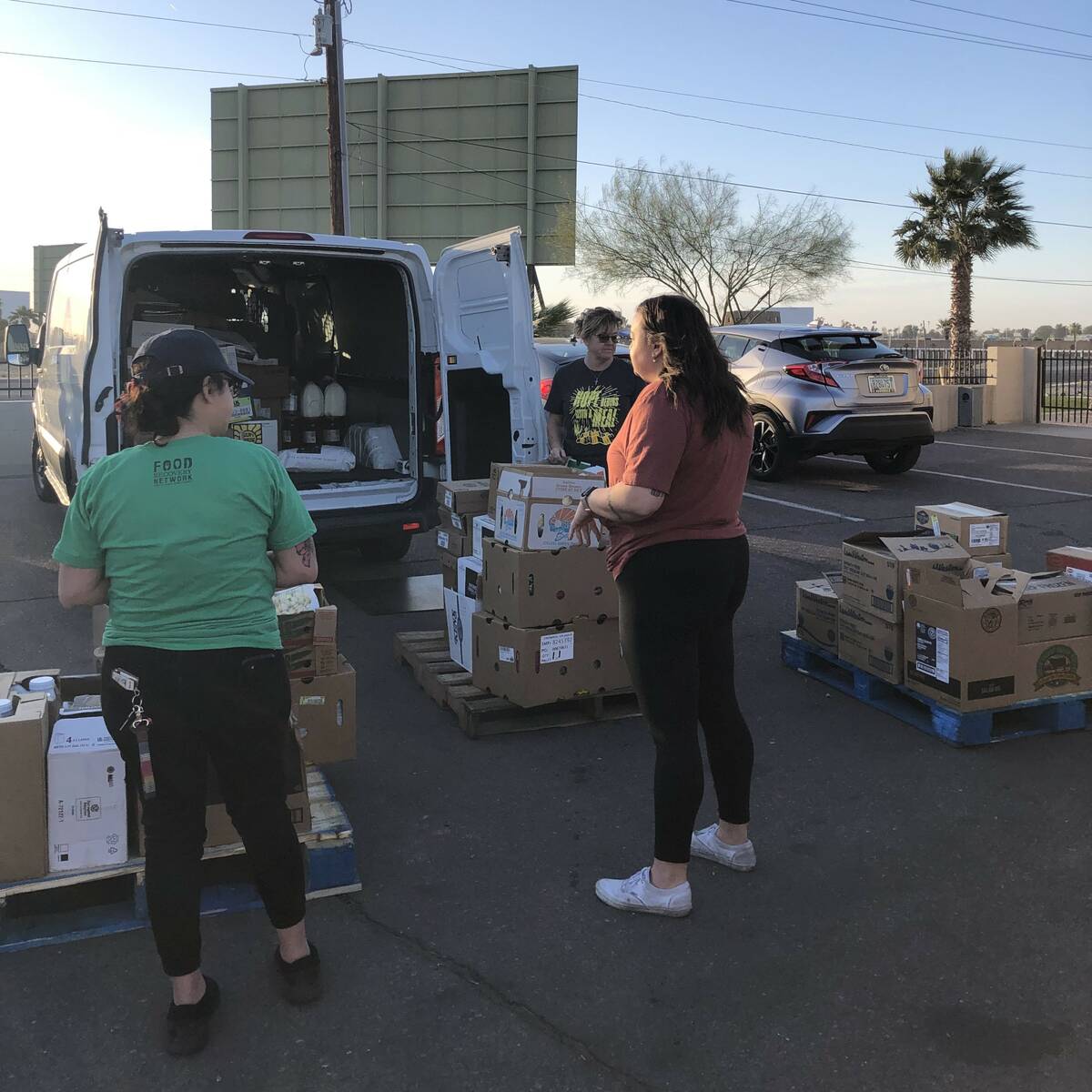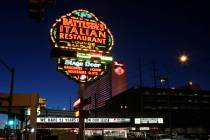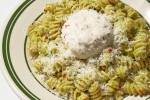What happens to leftover Super Bowl food? Here’s where some of it goes
Think of it as leftovers on a mission.
Food Recovery Network volunteers, including UNLV students, will be at the Players Tailgate near Allegiant Stadium on Super Bowl Sunday to collect surplus food, then distribute it to a partner organization that feeds the hungry in the Las Vegas Valley.
FRN (foodrecoverynetwork.org), one of the largest student-led movements against hunger and food waste in the U.S., is collecting food for the fourth time from Players Tailgate. For the first time, FRN is joined in its efforts by Hellman’s, which is donating $100,000 to the group.
“We are thrilled to partner with Hellmann’s to fight food waste and support those who don’t have enough food to eat,” said Regina Anderson, executive director of FRN. “Forty-four million people are unnecessarily facing food insecurity right now, while more than 42 million tons of food go to waste each year.”
At the Players Tailgate before the 2023 Super Bowl in Glendale, Arizona, volunteers directed almost 3,000 pounds of salvageable food — the equivalent of more than 2,400 meals — to those in need, FRN said, with more than 10,000 pounds of food in all recovered from the last three Big Game Tailgates.
“Fighting food waste can happen at large events like this and in many other locations like our schools, our conferences and our homes,” Anderson said. “We all have the power to ensure perfectly good food doesn’t go to waste.”
This year, surplus food will be donated to The Just One Project (thejustoneproject.org), a Vegas nonprofit that helps seniors, families and others in need of food. Here’s how the recovery effort works.
Keeping things fresh
This is not a food drive. Not even close.
As the Players Tailgate winds down before kickoff, FRN volunteers, event organizers and on-site chefs start assessing which surplus foods — uncooked or prepared — are suitable for donation. Suitable foods are kept in a refrigerated truck to maintain their freshness, then sorted, packed into vans and delivered to The Just One Project, where the surplus is refrigerated, stored and served.
“From start to finish, they’ll complete the whole food recovery process in under two hours to keep everything safe for consumption,” said Katie Sargent, a spokesperson for FRN.
“This type of food recovery model is much different and more involved than simply donating canned or shelf-stable food, so it requires a lot of coordination and on-the-ground decision making to ensure the food remains safe to eat.”
Far beyond canned soup
The variety of foods FRN recovers might comes as a surprise.
“In addition to pantry staples that are more commonly donated, we are able to recover meat, seafood, eggs, dairy, condiments and other foods that are not typically donated,” Sargent said. “In the past, we have recovered everything from mustard and homemade barbecue sauce to steak, chicken, and even crab legs.”
The food recovered also depends, of course, on what’s served at an event. At this year’s Players Tailgate, the menu encompasses everything from to bay scallops, paella and cake pops to lobster salad, grilled chicken wings and pork vindaloo.
Now those are some potential leftovers.
Contact Johnathan L. Wright at jwright@reviewjournal.com. Follow @JLWTaste on Instagram and @ItsJLW on X.



